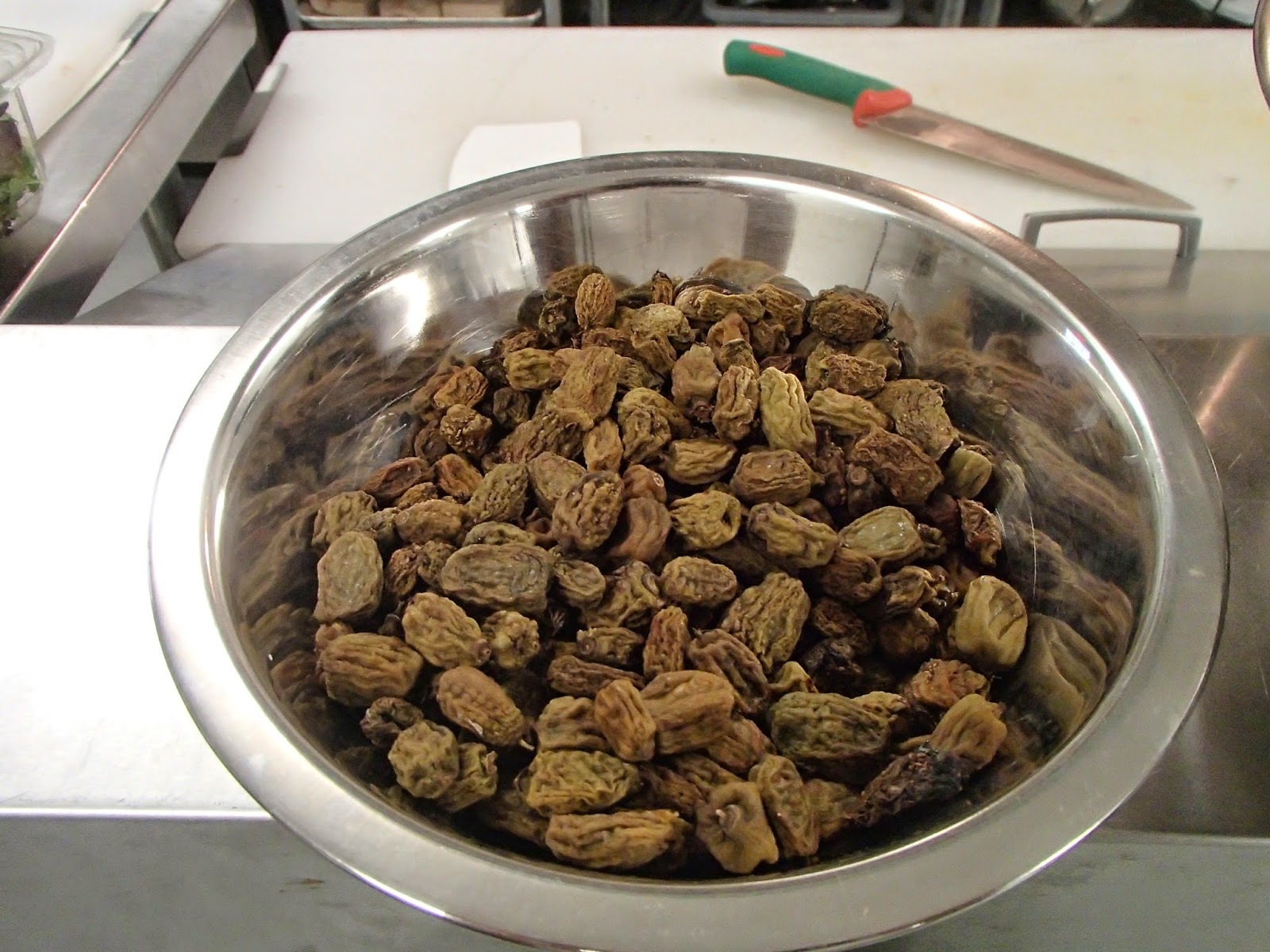To view the latest from Ridge Berry Farm visit our new blog and site!
When we first arrived at the farm, we were determined to grow some Jerusalem Artichokes. We knew them as a delicacy which was rather hard to find in the city, but that was about it. Never did we realize that this was a native plant.
In fact, the Jerusalem Artichoke is also known as the Sunchoke and basically has nothing to do with the Middle East. It is a poor translation of the Italian "Girasole Articiocco" which translates to Sunflower Artichoke.
At first, we tried to get roots of this pant via the Internet. For some reason every site promoting this plant seemed to be out of stock. As a result, we were quite pleased to get some last Fall from a local patron. After learning how well they grow here and doing some research, we ended up seeing this native plant just about everywhere in Niagara. It grows wild on the side roads throughout the country side.
 |
| Our first batch of Sunchokes ready for planting |
We decided to let Chef have his try with some of the roots and he produced a wonderful cream soup. We then decided to dedicate a raised bed to this amazing plant. The problem is come Spring time, we completely forgot which bed we used and could not find the roots.
Luckily, we also discovered this plant in the back of the old manor. As we were preparing to landscape this year, we decided to take those roots and appoint a special raised bed just for them.
It did not take long for us to find the "lost" roots we had planted the previous Fall. The bed was planted with Squash and the Sunchokes completely and effectively took over the entire space, destroying our Squash vines in the process. So we now have two beds filled to the rims.
The Sunchoke is a species of Sunflower and a beautiful one at that. It will grow well over 6 feet and will carry beautiful yellow daisy-like flowers into the Fall. The stems are thick and very strong.
 |
| Blooming Sunchokes |
Since some of these plants have already gone to seed and since it is now time to clean some of our raised beds for next year's planting, we decided to tackle the harvesting of some Sunchokes as well as prepare them for the late Fall and Winter months. In fact, with the strong winds coming over the ridge some of these very tall plants are starting to fall over. Their root structure is not very deep.
 |
| Sunchokes going to seed |
The edible delicacy of the Suchoke is in those roots or tubers of the plant. In fact, they are prolific "multipliers". One tuber will easily generate another dozen in one growing season.
 |
| One tuber generates a significant amount of food in a growing season |
Although a great and healthy food which was used by both aboriginal and settlers alike, there are a couple of issues associated with the Sunchoke. One of these is its short shelf life.
Once taken out of the ground, the roots will not last long and need to be kept in a cold and very humid environment. They tend to blacken and turn limp.
The best way to store the Sunchoke is basically to keep it in the ground. Since we intend to use this as a source of food this Fall and during the Winter, we prepared our beds by cutting the Sunchokes down to about 12 inches. This will prevent the plants from falling over in the wind, while we will always be able to find them even in the snow.
 |
| A Sunchoke bed ready for the Winter |
The Sunchoke root resembles the size and shape of Ginger. Its taste however is mildly sweet and very similar to its namesake the Artichoke. It can be processed very much in the same way as you would potatoes. However, it can also be eaten raw in salads where it has a flavour and consistency similar to that of Water Chestnuts. Because the skin of the Sunchoke tuber is rather thin, it does not necessarily need to be peeled to be enjoyed.
Our first roots we simply processed as we would roasted Potatoes. We brushed clean the Sunchoke roots, cut them into bite size pieces and roasted them with olive oil, Garlic and fresh Thyme.
 |
| Sunchokes ready for roasting |
One note of caution, you do not want to overcook the roots. They do tend to become "mushy" when overdone.
This brings us to the second problem of the Sunchoke. They contain a lot of inulin.
Inulin is found in many plants and is a zero calorie polysaccharide. Inulin is used by the plant to store energy. It is zero calories simply because our bodies cannot digest it. The result is that it can cause flatulence.
Our bodies can adapt to inulin, but the best way to overcome this problem is to wait a little later in the year to harvest the roots. As the Fall progresses, the plant will be stressed by frost. The more frost it is subjected to, the more the plant will transform this inulin into sugars.
Earlier, we indicated that the best way to store the Sunchoke is in the ground. There is however the possibility to pickle and can Sunchokes. We decided to give this a try as well.
Our recipe is simple. We cut the roots into small (less than 1/2 inch) bite size pieces. We place these overnight in a brine consisting of lemon juice, water and salt. The ratios were 250 ml of lemon juice for 2 litres of water and 1/2 cup of Kosher salt. This prevents the roots from browning.
We then prepared a vinegar solution consisting of 6 cups of cider vinegar, 1 1/2 cup of white wine vinegar, and 1 cup of sugar. To this, we added 3 Tsp of mustard seeds, 2 Tsp of Turmeric, 2 Tsp of Chili fakes and 2 tsps of dry powdered mustard. We also added 3 large Bay leaves and 3 cloves. The whole thing was boiled and brought back down to room temperature.
We then simply canned our Sunchokes with this mixture.
 |
| Canned Sunchokes |
The result is a great crunchy pickle which seems to be perfect as an accompaniment to Middle Eastern or North African dishes. It can also be used simply as a "munchy" with beer.
For us, the Sunchoke turns out to be a great compliment to our garden. It is a beautiful flowering plant; it is easy to grow and prolific (also requires no weeding); it is a healthy food (a good source of fibre and vitamins while being a great replacement to other high calorie starches); it is delicious and versatile.
We'll end this week with a couple of photos which summarize the progress in our growing dome. We're now able to harvest our first bell peppers and heirloom tomatoes!
 |
| Bell Peppers from the Growing Dome |
 |
| Gorgeous Marizol Gold heirloom tomato |































